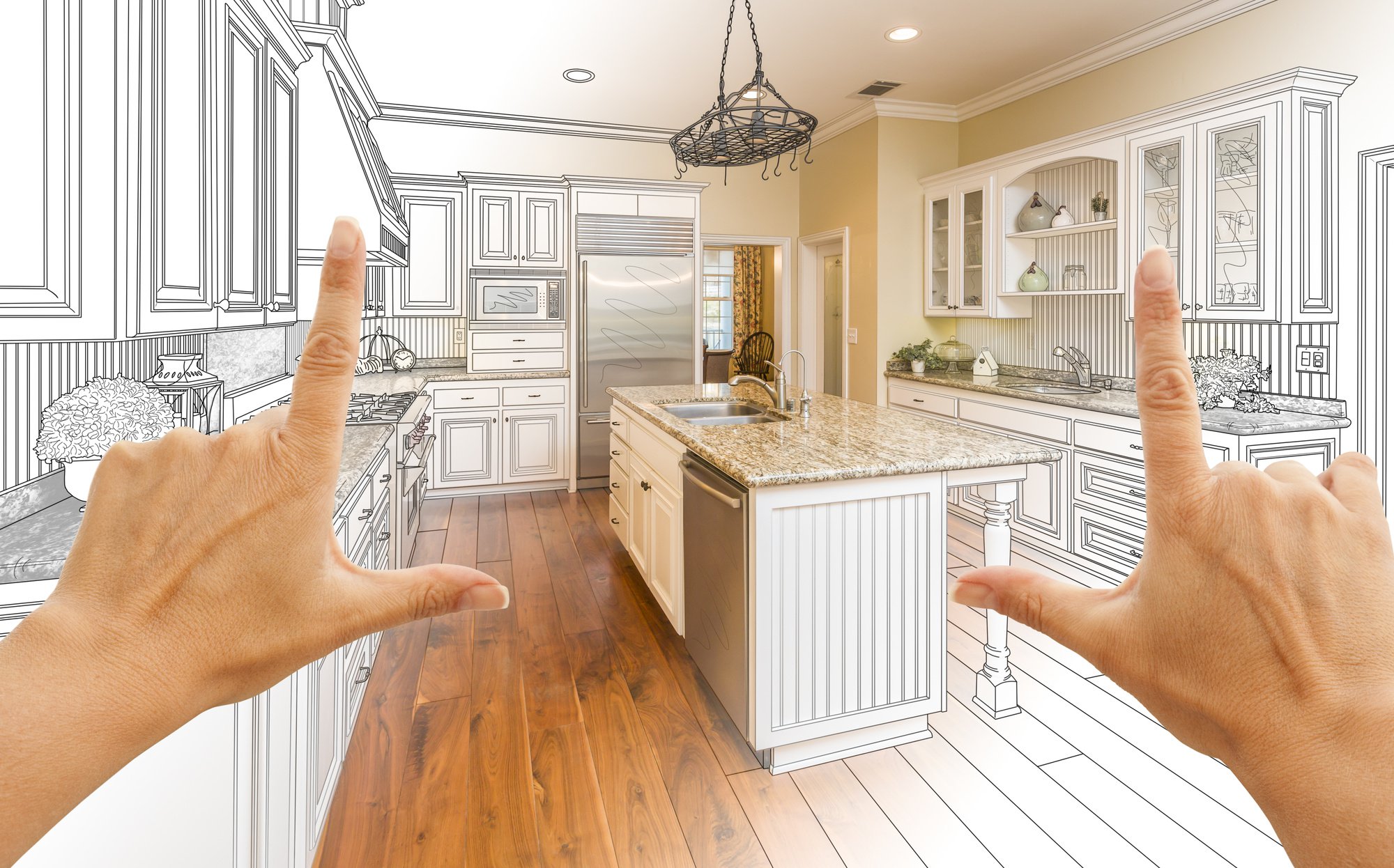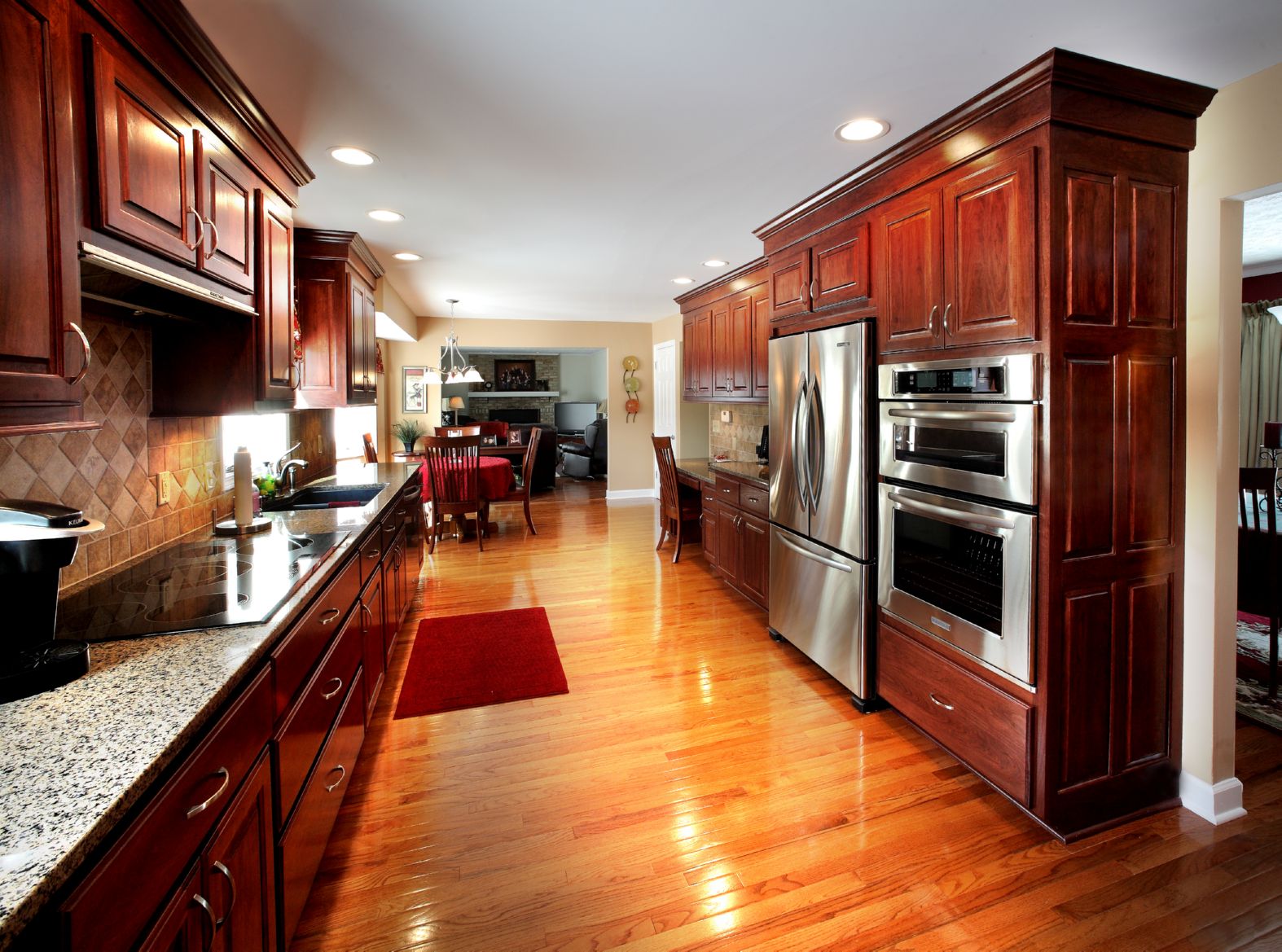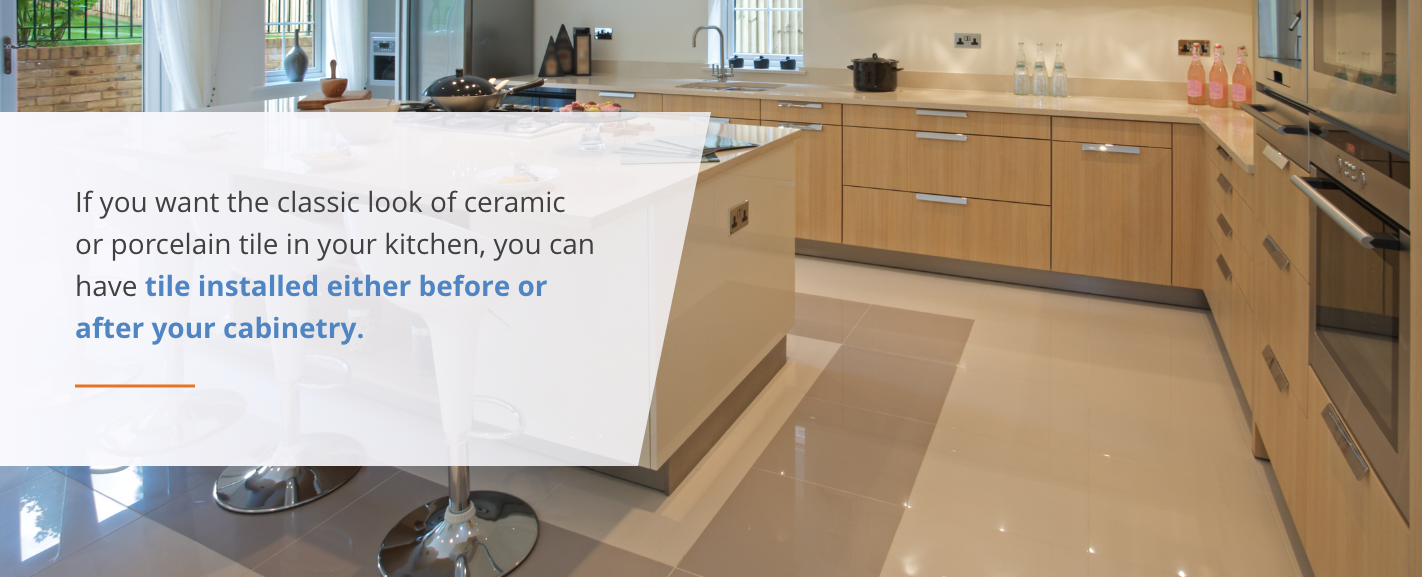The Importance of Planning: Kitchen Remodel Tile Or Cabinets First

Planning a kitchen remodel is crucial for achieving a successful outcome. It allows you to define your vision, manage your budget, and ensure a smooth and efficient process. A well-planned remodel minimizes stress and maximizes satisfaction with the final result.
Benefits of Planning
A comprehensive plan provides numerous advantages for your kitchen remodel. It helps you establish a clear vision, manage your budget effectively, and avoid potential pitfalls.
- Defined Vision: A detailed plan helps you visualize the final look and functionality of your kitchen. This includes selecting materials, appliances, and fixtures that align with your preferences and lifestyle.
- Budget Management: Planning allows you to allocate your budget efficiently. You can prioritize essential elements, compare costs of different materials and services, and avoid unnecessary expenses.
- Timeline Management: A well-defined timeline ensures that the project progresses smoothly and stays on track. It helps you coordinate with contractors, suppliers, and other stakeholders, minimizing delays and disruptions.
- Scope Definition: A clear project scope helps you identify the specific tasks involved in the remodel, such as demolition, plumbing, electrical work, and installation. This ensures that all aspects of the project are addressed, minimizing surprises and potential issues.
Common Pitfalls of Poor Planning
Failing to plan can lead to several challenges and setbacks during a kitchen remodel. These include:
- Budget Overruns: Poor planning can result in unexpected expenses, exceeding your initial budget. This can be caused by not accounting for all necessary materials, labor costs, or unforeseen complications.
- Project Delays: Lack of planning can lead to delays in obtaining permits, sourcing materials, or scheduling contractors. This can disrupt your timeline and increase overall project costs.
- Unrealistic Expectations: Failing to consider the practical aspects of your design can lead to unrealistic expectations. This can result in a kitchen that is not functional or aesthetically pleasing, leaving you disappointed with the final result.
- Communication Breakdown: Poor communication among contractors, suppliers, and homeowners can lead to misunderstandings and conflicts. This can create delays, increase costs, and compromise the quality of the remodel.
Planning a Kitchen Remodel, Kitchen remodel tile or cabinets first
A well-structured plan ensures a successful kitchen remodel. Here is a flowchart illustrating the essential steps:
- Define your Vision: Clearly define your desired kitchen layout, style, and functionality. Consider your lifestyle, cooking habits, and storage needs.
- Establish your Budget: Determine a realistic budget for the remodel, factoring in materials, labor, permits, and contingencies.
- Research and Select Contractors: Get recommendations, interview potential contractors, and choose a reputable and experienced professional.
- Develop a Detailed Plan: Create a comprehensive plan outlining the scope of work, timeline, and budget breakdown.
- Obtain Necessary Permits: Ensure you obtain all required permits and approvals from your local authorities.
- Source Materials and Appliances: Research and select materials and appliances that meet your specifications and budget.
- Schedule and Coordinate: Coordinate with contractors, suppliers, and other stakeholders to ensure a smooth and efficient workflow.
- Monitor Progress and Make Adjustments: Regularly monitor the progress of the project, address any issues promptly, and make adjustments as needed.
Tile vs. Cabinets

So, you’ve planned your kitchen remodel, but now comes the big decision: tile or cabinets first? It’s a question that has sparked debates among DIY enthusiasts and seasoned renovators alike. Let’s break down the pros and cons of each approach, helping you make the best choice for your unique project.
Factors Influencing the Decision
The choice between tile and cabinets first depends on several factors, including your budget, desired style, and the existing infrastructure of your kitchen.
- Budget: If you’re on a tight budget, starting with cabinets might be more cost-effective. This allows you to prioritize the main functional elements of your kitchen, like storage and workspaces, before investing in aesthetic features like tile. However, if you have a larger budget, you can consider starting with tile to create a stunning backdrop for your cabinets.
- Style: Your desired style also plays a significant role. If you envision a modern, minimalist kitchen with sleek, contemporary cabinets, starting with tile might be the better option. This allows you to create a clean, cohesive look with a neutral backdrop. On the other hand, if you prefer a more traditional or eclectic style with intricate cabinet designs, starting with cabinets might be more suitable.
- Existing Infrastructure: The existing infrastructure of your kitchen can also influence your decision. If your kitchen has uneven floors or walls, starting with tile might be more challenging. You’ll need to address these issues before installing cabinets, potentially adding to the overall cost and complexity of the project. Conversely, if your kitchen has a smooth, even surface, starting with cabinets might be a more straightforward approach.
Potential Challenges and Advantages of Each Approach
Starting with tile can offer a clean, polished look, but it can also create challenges:
- Potential for damage: Installing cabinets after tile can increase the risk of damaging the tile during the installation process. You’ll need to be extra careful to avoid scratches or chips.
- Limited design flexibility: If you start with tile, you’ll need to consider how your cabinet choices will complement the tile design. You might have fewer options for cabinet styles and colors to ensure a cohesive look.
On the other hand, starting with cabinets offers its own set of advantages and challenges:
- Easier to install tile: Installing tile after cabinets allows for easier access to the floor and walls, making the installation process less challenging.
- Greater design flexibility: You have more freedom to choose your cabinet styles and colors without being limited by the existing tile design.
- Easier to adjust for uneven surfaces: If you have uneven floors or walls, starting with cabinets allows you to address these issues before installing tile.
Pros and Cons of Tile vs. Cabinets
Here’s a quick summary of the pros and cons of each approach:
| Option | Pros | Cons | ————— | ——————————————————————- | ————————————————————————- | Tile First | <ul><li>Creates a clean, polished look.</li><li>Provides a neutral backdrop for your cabinets.</li></ul> | <ul><li>Risk of damage to tile during cabinet installation.</li><li>Limited design flexibility for cabinets.</li></ul> | Cabinets First | <ul><li>Easier to install tile.</li><li>Greater design flexibility for cabinets.</li><li>Easier to adjust for uneven surfaces.</li></ul> | <ul><li>Potentially less polished look initially.</li><li>May require additional work to ensure seamless integration between tile and cabinets.</li></ul> |
|---|
Ultimately, the best approach for your kitchen remodel depends on your specific needs and preferences. Consider your budget, desired style, and the existing infrastructure of your kitchen before making a decision.
Practical Considerations and Recommendations

Choosing the right tile and cabinet materials for your kitchen remodel can be overwhelming. But with a little research and planning, you can make informed decisions that will enhance your kitchen’s functionality and aesthetics for years to come. This section will provide expert tips and recommendations to help you navigate the process, identify common pitfalls to avoid, and find reliable resources for your project.
Choosing the Right Tile Materials
Selecting the right tile material is crucial for both durability and style. Here are some key factors to consider:
- Durability: For high-traffic areas like kitchen backsplashes and floors, consider materials like porcelain, ceramic, or natural stone. These are known for their resistance to scratches, stains, and wear and tear.
- Maintenance: Porcelain and ceramic tiles are generally low-maintenance, while natural stone may require sealing and regular cleaning to prevent staining.
- Aesthetics: Explore a wide range of tile styles, colors, and textures to find the perfect match for your kitchen design. Consider the overall color scheme, lighting, and desired ambiance.
- Budget: Tile prices can vary significantly depending on material, size, and brand. Set a budget beforehand and explore options within your price range.
Choosing the Right Cabinet Materials
Cabinet materials are equally important, influencing both the look and longevity of your kitchen. Here’s a breakdown of popular options:
- Wood: Solid wood cabinets offer timeless elegance and durability. Common choices include maple, cherry, oak, and walnut. However, they can be more expensive than other materials.
- Plywood: Plywood cabinets provide a balance of durability and affordability. They are less prone to warping and are often available in various finishes.
- Medium-Density Fiberboard (MDF): MDF cabinets are relatively inexpensive and offer a smooth, paintable surface. However, they may be less durable than wood or plywood.
- Thermofoil: Thermofoil cabinets feature a durable, laminated surface that is resistant to scratches and moisture. They are available in various colors and patterns, offering a budget-friendly option.
Common Mistakes to Avoid
While planning your kitchen remodel, avoid these common mistakes to ensure a successful outcome:
- Not Considering Your Lifestyle: Choose materials that suit your lifestyle. If you have young children, opt for durable and easy-to-clean materials. If you prefer a minimalist aesthetic, consider sleek and modern options.
- Ignoring the Importance of Lighting: Adequate lighting is crucial for a functional and aesthetically pleasing kitchen. Plan your lighting fixtures carefully, considering natural light sources and artificial lighting options.
- Overlooking Ergonomics: Consider the ergonomics of your kitchen layout. Ensure that countertops, sinks, and appliances are at a comfortable height and distance for easy use.
- Not Planning for Storage: Adequate storage is essential for a well-organized kitchen. Plan your cabinet layout carefully, considering your storage needs and maximizing space.
Finding Reliable Contractors and Suppliers
Finding reliable contractors and suppliers is crucial for a smooth kitchen remodel process. Here are some resources to consider:
- Word-of-Mouth Recommendations: Ask friends, family, and neighbors for recommendations on contractors and suppliers they have worked with in the past.
- Online Reviews: Explore online review platforms like Yelp, Angie’s List, and HomeAdvisor to read customer reviews and ratings of local contractors and suppliers.
- Professional Associations: Look for contractors who are members of professional associations like the National Kitchen & Bath Association (NKBA) or the National Association of the Remodeling Industry (NARI).
- Local Building Supply Stores: Building supply stores often have a list of recommended contractors and suppliers who are familiar with local building codes and regulations.
Step-by-Step Guide for Installing Tile and Cabinets
Installing tile and cabinets requires careful planning and execution. Here’s a step-by-step guide to help you through the process:
- Preparation: Clear the area where you will be installing tile or cabinets. Remove any existing fixtures or appliances. Ensure the surface is clean and level.
- Tile Installation:
- Apply thin-set mortar to the prepared surface using a notched trowel.
- Place the tiles on the mortar, ensuring they are level and spaced evenly.
- Use spacers to maintain consistent grout lines.
- Allow the mortar to cure completely before grouting.
- Apply grout to the spaces between the tiles, wiping away any excess grout with a damp sponge.
- Cabinet Installation:
- Mark the wall where the cabinets will be installed, ensuring they are level and plumb.
- Attach mounting brackets to the wall using screws or nails.
- Hang the cabinets on the brackets, making sure they are secure and level.
- Install doors and drawers, ensuring they operate smoothly.
- Safety Precautions:
- Always wear safety glasses and gloves when working with tile or cabinets.
- Use a ladder or scaffolding for high areas, ensuring it is stable and secure.
- Be mindful of electrical wires and plumbing lines when drilling or cutting.
- Follow manufacturer instructions for all materials and tools.
Kitchen remodel tile or cabinets first – Okay, so you’re thinking about a kitchen remodel. Big decision! But before you get lost in the tile vs. cabinets debate, maybe consider a quick detour to the bedroom. Choosing the right curtains is a whole vibe, you know?
Long or short curtains in bedroom can totally change the mood. Anyway, back to the kitchen. Think about what you want to achieve, like a sleek modern look or a cozy farmhouse vibe, then decide if the tile or the cabinets should be the star of the show.
Okay, so you’re thinking about a kitchen remodel, right? The big question: tile or cabinets first? Honestly, it depends on your vibe. But once those cabinets are in, you’ll need some serious hardware to complete the look. Check out this guide for kitchen cabinet pulls 3 inches, because let’s be real, you want those handles to be *on point*.
And trust me, getting the right pulls can make or break your whole kitchen remodel aesthetic. So, get those cabinets in, then get your handles game strong!
